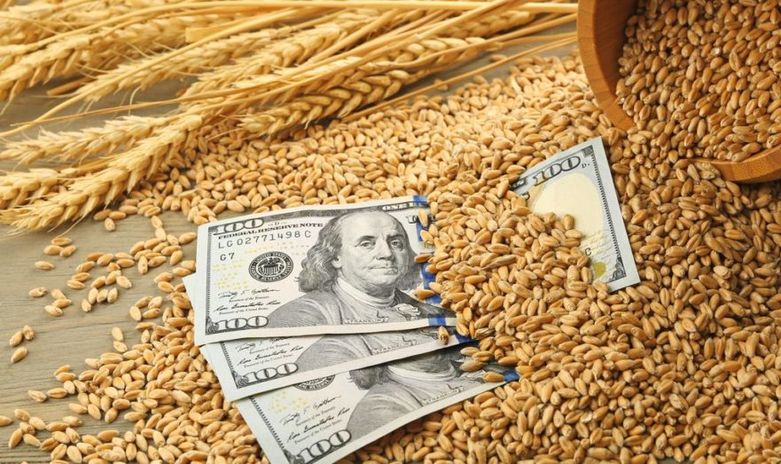Australia: grower selling evaporates in rallying market

Feedgrain prices have jumped $15-$30 per tonne in the past week on the back of offshore rallies prompted by global market uncertainty now that Russia has invaded Ukraine.
Flooding in southern Queensland and north-eastern New South Wales has further fuelled the rally as some consumers and accumulators scratch to get grain into their sites amid an ever-changing list of cut roads and inaccessible on-farm storages.
Traders say consumers are buying as little as possible during the bull run, and are mostly well covered.
| Today | Feb 24 | |
| Barley Downs | $315 | $292 |
| SFW wheat Downs | $340 | $313 |
| Sorghum Downs | $310 | $286 |
| Barley Melbourne | $340 | $325 |
| ASW wheat Melbourne | $390 | $360 |
| SFW wheat Melbourne | $380 | $355 |
Table 1: Indicative delivered prices in Australian dollars per tonne.
The sorghum harvest which was gathering pace in northern NSW and southern Queensland was stopped in most districts by last week’s rain.
While patchy, it has flooded some paddocks, and many growers are not expecting to be back on the header before next week.
Some sprouting has been observed in crops, but trade sources have said the quality impact is likely to be small if no further rain falls on ripe grain.
In the week to 9am today, registrations in Queensland include: Dalby 109mm; Felton 213mm; Jondaryan 121mm, Macalister 54mm, and Surat 13mm.
In NSW, torrential rain has fallen in the coastal cropping zones, but registrations were mostly small in inland grain-growing areas, and include: Lightning Ridge 48mm; Moree 29mm; Mungindi 12mm; Narrabri 10mm, and Walgett 18mm.
“The market just seems to go up, up, up; it’s all bids and no offers.”
Brisbane’s two export grain terminals were closed for much of the past week as flooding closed many roads in Brisbane, the Lockyer Valley and on the Darling Downs.
Brisbane’s container port, Australia’s biggest export point for boxed sorghum, has also been closed for at least two days because of the flood.
A trade source said, “Understandably, we’re not getting a lot of engagement from growers.”
“We’re moving a bit on farm, but I’d say we can only get to 15-20 per cent of the growers we normally can because of the flood situation.
“A lot of growers are living in fear with more rain forecast.”
Another source said the northern market was effectively trading two books, one based on execution to the domestic consumer, and another looking at export.
“Growers are not volume sellers.
“They’re seeing Chicago rally since Putin started bombing Ukraine, and they’re holding their grain, because their cashflow requirements have already been satisfied.
He said the market was bid, but offers were “hard to come by”.
Growers will typically hold grain in rising markets, and sell when they start trending down.
With most under no pressure to sell after making good money out of canola, pulses and milling wheat already, they are happy to sit out.
Emerald Grain trader Richard Woods said SFW wheat is in demand from export, and has just about closed the gap to the higher-spec ASW.
“Everything’s got a bit of a fire under it with Russia and Ukraine supplies taken out of the equation for now,” Mr Woods said.
“We’re definitely firmer, and grower selling is limited.”
However, domestic consumers, and exporters accumulating for June-August shipment, appear not to be too worried.
“We’ve got no shortage of grain here.”
Peter’s Commodities trader Peter Gerhardy said SFW wheat was trading at around $300/t on farm in southern NSW, and was attracting some grower engagement.
“That’s a jolly good level for feed wheat historically, and some growers are happy to take it.”
“Barley’s the one that’s still sitting in the closet.”
“It’s about $270 on farm.”
Mr Gerhardy said any wheat below milling specs was now priced comparably.
“To a lot of consumers, ASW, SFW and AH9 are all the same.
“You could throw a blanket over them in terms of price difference.”
He also said domestic consumers were mostly comfortable to sit out in the current rally.
“There’s a heck of a lot of grain still on farm, and in private storage.
“If you look at domestic consumers, they say: ‘I’ve got some cover on, so I’ll sit this out’.”
Read also
Wheat in Southern Brazil Impacted by Dry Weather and Frosts
Oilseed Industry. Leaders and Strategies in the Times of a Great Change
Black Sea & Danube Region: Oilseed and Vegoil Markets Within Ongoing Transfor...
Serbia. The drought will cause extremely high losses for farmers this year
2023/24 Safrinha Corn in Brazil 91% Harvested
Write to us
Our manager will contact you soon



